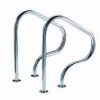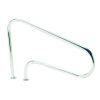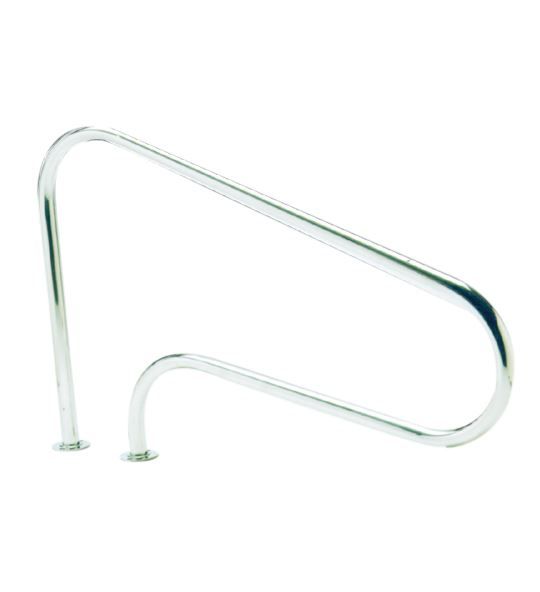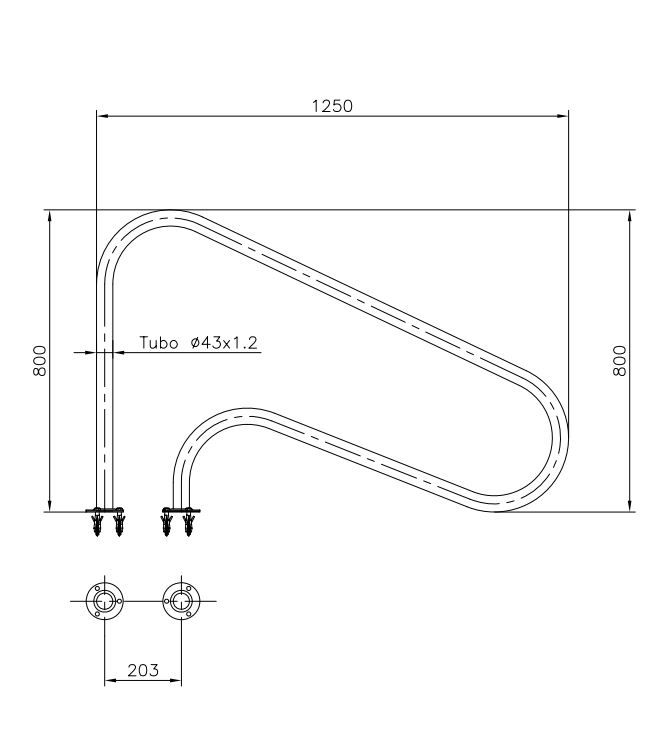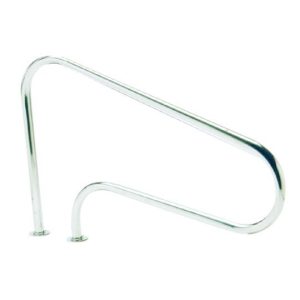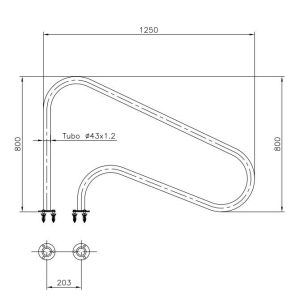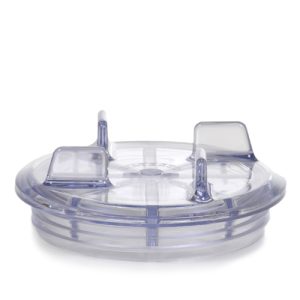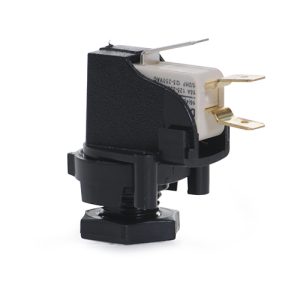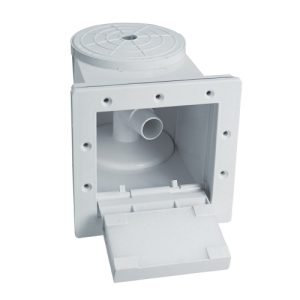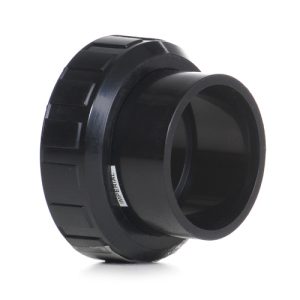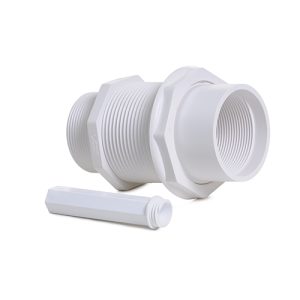Astral Extra Reach Grab Rail 43mm tube – with flanges (gasket, screws, fixing plugs) l 07781
£323.00 Inc VAT
Astral Extra Reach Grab Rail 43mm Tube – With Flanges
Complete Surface-Mounted Pool Safety Rail System
As a retailer of pool and spa parts, I offer this premium grab rail from Astral with complete flange mounting hardware. Unlike the embedding version, this rail comes ready for surface installation with all necessary components included—flanges, gaskets, screws, and fixing plugs—making it ideal for retrofitting existing pool decks or installations where embedded mounting isn’t feasible.
What is a Flange-Mounted Grab Rail?
A flange-mounted grab rail attaches to the pool deck surface using mounting plates (flanges) that bolt down rather than embedding posts into concrete. This design allows installation on existing decks without major structural modifications, making it the preferred choice for renovations, repairs, or situations where deck demolition isn’t practical.
The rail provides the same safety function as embedded versions—secure hand support for entering and exiting the pool—but with a mounting system that’s more flexible and adaptable to various deck conditions.
Complete Installation Kit
This package includes everything needed for professional installation:
Main Rail: Polished AISI-316 stainless steel construction with 43mm tube diameter in the extended reach configuration
Flanges: Mounting plates that attach to the rail posts and secure to the deck surface, distributing load across a wider area than simple bolt holes
Elastic Gaskets: Rubber or elastomer seals that sit between the flanges and deck surface, creating a weatherproof seal that prevents water infiltration while providing some vibration dampening
Fixing Plugs: Anchoring components that install in the deck to provide secure attachment points for the mounting screws
Screws: Corrosion-resistant fasteners specifically selected for compatibility with stainless steel and pool environments
This complete kit eliminates the guesswork and compatibility concerns that arise when sourcing components separately.
AISI-316 Marine-Grade Stainless Steel
The rail is manufactured from AISI-316 stainless steel with 18/8/2 composition (18% chromium, 8% nickel, 2% molybdenum). This marine-grade alloy is specifically engineered for harsh aquatic environments where constant exposure to chlorinated water, salt, and moisture would rapidly corrode lesser materials.
The molybdenum content is the key differentiator from standard 304 stainless steel—it dramatically improves resistance to chloride-induced pitting and crevice corrosion. This is crucial in pool environments where chlorine is continuously present and can attack vulnerable materials.
The polished finish provides both aesthetic appeal and functional benefits. The smooth, non-porous surface resists bacterial growth, is easy to clean, and enhances corrosion resistance by eliminating microscopic surface irregularities where corrosion could initiate.
The 43mm tube diameter offers comfortable grip for most users while providing substantial strength to support body weight during entry and exit. This professional-grade diameter is commonly specified for commercial pool installations where durability and user safety are paramount.
Advantages of Flange Mounting
Surface mounting via flanges offers several benefits over embedding installation. Installation is simpler and faster, requiring only drilling holes and installing anchors rather than forming and pouring concrete. This significantly reduces installation time and complexity.
The rail can be installed on existing decks without demolition or major reconstruction. This makes flange mounting ideal for retrofits, repairs, or adding safety features to older pools where breaking up concrete isn’t practical or cost-effective.
If future deck modifications become necessary, flange-mounted rails can be relocated more easily than embedded versions. While still requiring new anchor holes, the flexibility is greater than with permanently embedded posts.
The flanges distribute loading across a larger area than embedded posts, reducing stress concentration on the deck surface. This can actually provide better load distribution on certain deck materials.
Installation Considerations
While simpler than embedding, flange installation still requires proper technique for safety and longevity. The deck must have adequate thickness and structural integrity to support the anchoring system—typically at least 100-150mm of solid concrete.
Anchor positioning is critical. The fixing plugs must be installed in sound concrete, avoiding areas with cracks, voids, or deterioration. Poorly positioned anchors can pull out under load, creating serious safety hazards.
The elastic gaskets must be properly positioned to seal the interface between flanges and deck. This prevents water from seeping under the flanges where it could cause corrosion of the anchors or freeze damage in cold climates.
All fasteners should be tightened to appropriate torque specifications—sufficient to secure the rail firmly but not so tight as to crush gaskets or crack the deck. Overtightening is a common installation error that compromises both the seal and structural integrity.
Professional installation is strongly recommended. While flange mounting is more DIY-friendly than embedding, proper installation requires understanding of concrete anchoring, load distribution, and applicable safety standards.
Extended Reach Design
The “extra reach” configuration extends the rail further from its mounting point compared to standard grab rails. This provides several advantages: better positioning for users who need support at a distance from the immediate pool edge, accommodation of deck configurations where aesthetics or functionality require setback mounting, and improved leverage for users pulling themselves from the water.
Extended reach rails are particularly valuable in accessible pool designs serving elderly users or those with mobility limitations. The extended position allows users to grasp the rail earlier in the entry process and maintain contact longer during exit.
Maintenance Requirements
Despite its corrosion-resistant construction, regular maintenance preserves both appearance and function. Rinse the rail periodically with fresh water to remove chlorine residue, chemical deposits, and debris. This simple step significantly extends the rail’s life and maintains its polished appearance.
Inspect the flange mounting points regularly, especially during the first year after installation. Check that all fasteners remain tight and no movement has developed. Retighten if necessary, though be careful not to overtighten.
Examine the gaskets annually for deterioration, compression set, or cracking. While the elastic gaskets are durable, eventual replacement may be needed to maintain proper sealing. Water stains or rust marks around flanges indicate gasket failure requiring attention.
Check for any movement or looseness in the rail. If the rail shifts or wobbles, investigate immediately—loose anchors pose serious safety risks and must be repaired promptly. This may involve reinstalling anchors in fresh locations if the original holes have enlarged.
Clean the rail with mild soap and water as needed. Avoid abrasive cleaners or tools that could scratch the polished finish. While scratches don’t compromise structural integrity, they may detract from appearance and can provide initiation sites for corrosion in extreme conditions.
Safety and Standards Compliance
Pool grab rails must comply with various safety standards and building codes governing placement, height, load capacity, and installation methods. These regulations ensure rails provide effective support without creating hazards.
Installers must verify compliance with local requirements regarding:
- Mounting height above the deck surface
- Distance from pool edge, steps, or ladders
- Load-bearing capacity (typically several hundred pounds minimum)
- Flange size and anchor specifications
- Spacing requirements if multiple rails are needed
The flange mounting system must be installed correctly to meet load-bearing requirements. Inadequate anchoring or improper installation can allow the rail to pull free under load, potentially causing serious injuries.
Applications
This flange-mounted rail system is ideal for:
- Retrofitting existing pools lacking adequate safety features
- Replacing corroded or damaged embedded rails without deck demolition
- Installations on decks where embedding isn’t structurally feasible
- Temporary or semi-permanent installations (though still requires proper anchoring)
- Deck materials or conditions unsuitable for embedded posts
- Commercial facilities requiring periodic equipment updates
- Residential pools where homeowners want professional safety features
The complete hardware package makes this particularly attractive for contractors and pool owners who want a turnkey solution without sourcing individual components.
Product Specifications
| Specification | Details |
|---|---|
| Product Type | Surface-Mounted Pool Grab Rail System |
| Material | AISI-316 Stainless Steel (18/8/2 marine grade) |
| Finish | Polished |
| Tube Diameter | 43mm (approximately 1.7 inches) |
| Design | Extended reach configuration |
| Installation Method | Flange mounting (surface installation) |
| Hardware Included | Flanges, elastic gaskets, fixing plugs, screws |
| Supply | Complete kit ready for installation |
| Application | Pool entry/exit safety support |
| Environment | Suitable for chlorinated and saltwater pools |
| SKU | 07781 |
| Category | Pool & Spa Spares |
Installation Best Practices
Choose mounting locations carefully, considering user needs, traffic patterns, and deck layout. Position rails where they’ll be most beneficial for typical entry and exit paths.
Verify deck thickness and condition before drilling. The concrete must be sound, adequately thick, and free from major cracks or deterioration. Compromised concrete cannot provide secure anchoring.
Use proper drilling techniques with carbide or diamond bits designed for concrete. Hole size must match the fixing plug specifications precisely—undersized holes prevent proper plug installation while oversized holes compromise holding power.
Clean holes thoroughly before installing fixing plugs. Concrete dust and debris prevent proper plug seating and reduce anchor strength. Use compressed air or vacuum to remove all material from holes.
Position gaskets carefully to ensure complete sealing around all flanges. Gaskets that are twisted, wrinkled, or improperly sized cannot seal effectively.
Tighten fasteners in a cross pattern to distribute pressure evenly. This ensures the flange sits flat and gaskets compress uniformly. Follow torque specifications if provided—don’t simply tighten “as tight as possible.”
Quality Investment
This complete flange-mounted system represents excellent value by including all necessary hardware in one package. The marine-grade stainless steel construction ensures decades of reliable service, while the professional-grade components provide the strength and durability required for safety-critical applications.
The combination of AISI-316 materials, robust flange mounting system, and complete installation hardware makes this an excellent choice for both residential and commercial installations where quality, safety, and longevity are priorities.
Related products
Spares
Spares

